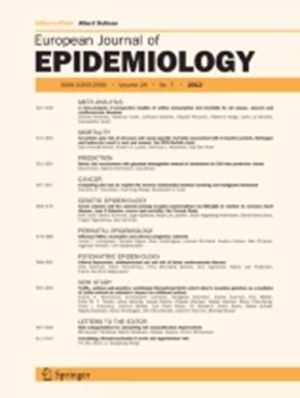为公众大脑、认知和心理健康辨别数据驱动的理论知情策略的广义加性混合模型。
IF 5.9
1区 医学
Q1 PUBLIC, ENVIRONMENTAL & OCCUPATIONAL HEALTH
引用次数: 0
摘要
社会隔离被认为是一种突发公共卫生事件。然而,主要的指导方针对如何针对它提供了截然不同的建议,而且还没有任何战略在坚实的理论或经验基础上得到证实。罗斯开创性的《预防医学战略》为这种方法之间的仲裁提供了理论框架。在这方面,确定风险因素与结果之间关系的形式是至关重要的。然而,立即将这一理论应用于证据的定量方法仍然缺乏。因此,在这一预先登记的分析中,我们采用了一种新颖的方法,并采用广义加性混合模型来模拟社会隔离与大脑、认知和心理健康结果之间的联系。我们从3T核磁共振成像中获得大脑测量值,通过广泛的神经心理学测试评估认知功能,并使用既定的问卷测量社会隔离和心理健康结果。总的来说,我们在基线时研究了10,000多名参与者(平均年龄58a, 53%为女性),在随访约6年后研究了5500多名参与者(平均年龄64a, 53%为女性)。社会接触与几乎所有结果的关系都是线性的,在社会隔离的标准阈值上下没有差异。只有在处理速度方面,我们发现社会孤立个体的斜率更大。因此,社会接触对健康的影响大多发生在那些不属于社会孤立的个体身上。将先进的统计方法应用于大型且特征良好的数据集,我们提供证据支持将重点从个人层面转向人群层面的预防方法。本文章由计算机程序翻译,如有差异,请以英文原文为准。
Generalized additive mixed models to discern data-driven theoretically informed strategies for public brain, cognitive and mental health.
Social isolation is recognized as a public health emergency. However, major guidelines provide vastly different recommendations on how to target it, and no strategy has been substantiated on firm theoretical or empirical grounds, yet. Rose's seminal The Strategy of Preventive Medicine provided a theoretical framework for such arbitrations between approaches. Therein, determining the shape of the relationship between risk factor and outcome is of paramount importance. However, quantitative approaches immediately applying this theory to evidence are still lacking. Thus, in this pre-registered analysis, we pursued a novel approach and employed generalized additive mixed models to model the shape of social isolation's Links to brain, cognitive and mental health outcomes in a well-characterised population-based sample. We derived brain measures from 3T MRIs, assessed cognitive functions with extensive neuropsychological testing and measured social isolation and mental health outcomes using established questionnaires. Overall, we studied over 10,000 (mean age 58a, 53% women) participants at baseline and over 5500 (mean age 64a, 53% women) at follow-up after ~ 6 years. The relationship of social contact with almost all outcomes was firmly linear and did not differ above and below the standard threshold for social isolation. Only for processing speed did we detect a steeper slope amongst socially isolated individuals. Hence, most of the health effects of social contact were observed in individuals that would not be categorised as socially isolated. Applying advanced statistical methods to a large and well-characterised dataset we provide evidence in support of a shift in focus away from individual-level and towards population-level preventive approaches.
求助全文
通过发布文献求助,成功后即可免费获取论文全文。
去求助
来源期刊

European Journal of Epidemiology
医学-公共卫生、环境卫生与职业卫生
CiteScore
21.40
自引率
1.50%
发文量
109
审稿时长
6-12 weeks
期刊介绍:
The European Journal of Epidemiology, established in 1985, is a peer-reviewed publication that provides a platform for discussions on epidemiology in its broadest sense. It covers various aspects of epidemiologic research and statistical methods. The journal facilitates communication between researchers, educators, and practitioners in epidemiology, including those in clinical and community medicine. Contributions from diverse fields such as public health, preventive medicine, clinical medicine, health economics, and computational biology and data science, in relation to health and disease, are encouraged. While accepting submissions from all over the world, the journal particularly emphasizes European topics relevant to epidemiology. The published articles consist of empirical research findings, developments in methodology, and opinion pieces.
 求助内容:
求助内容: 应助结果提醒方式:
应助结果提醒方式:


